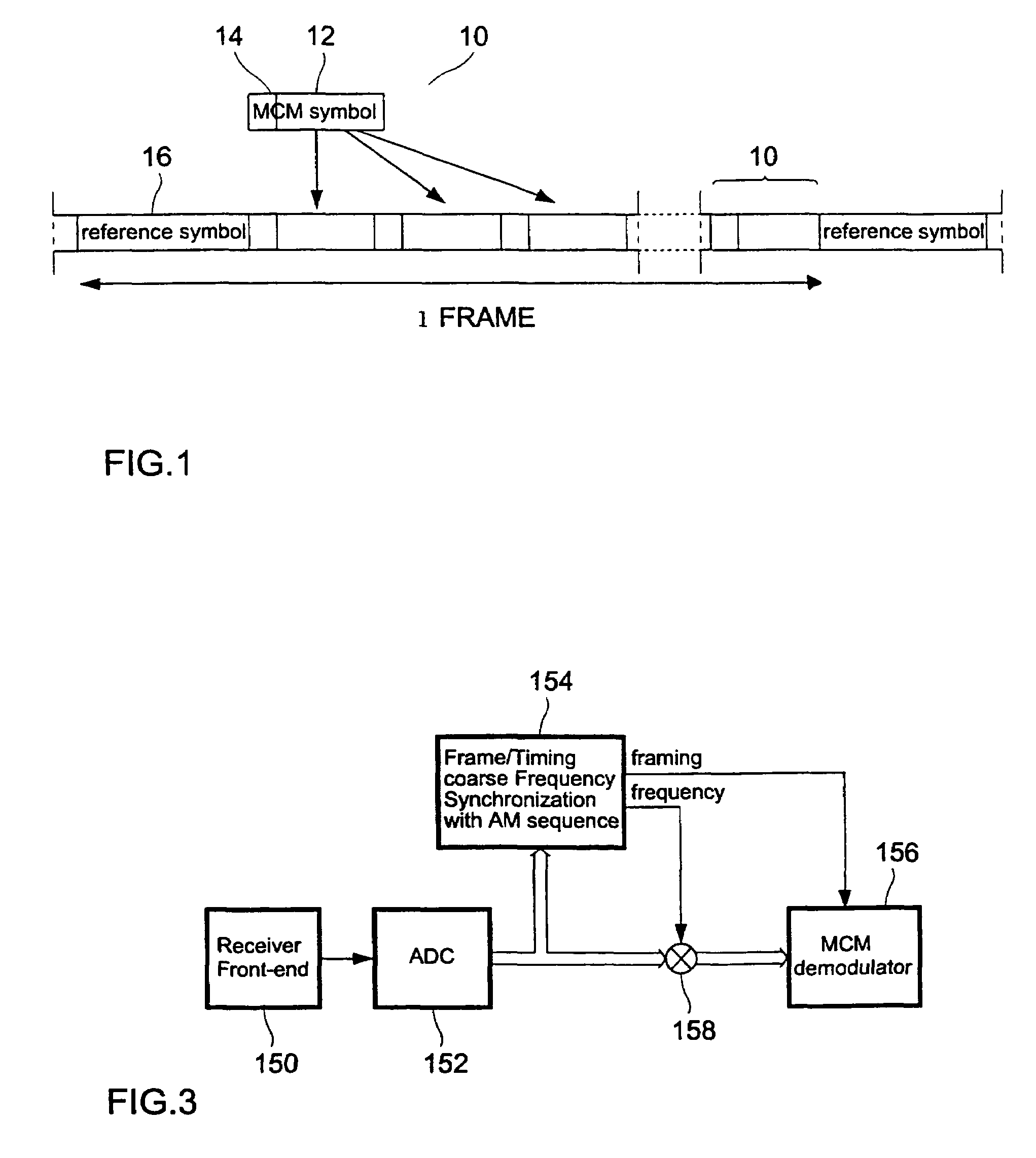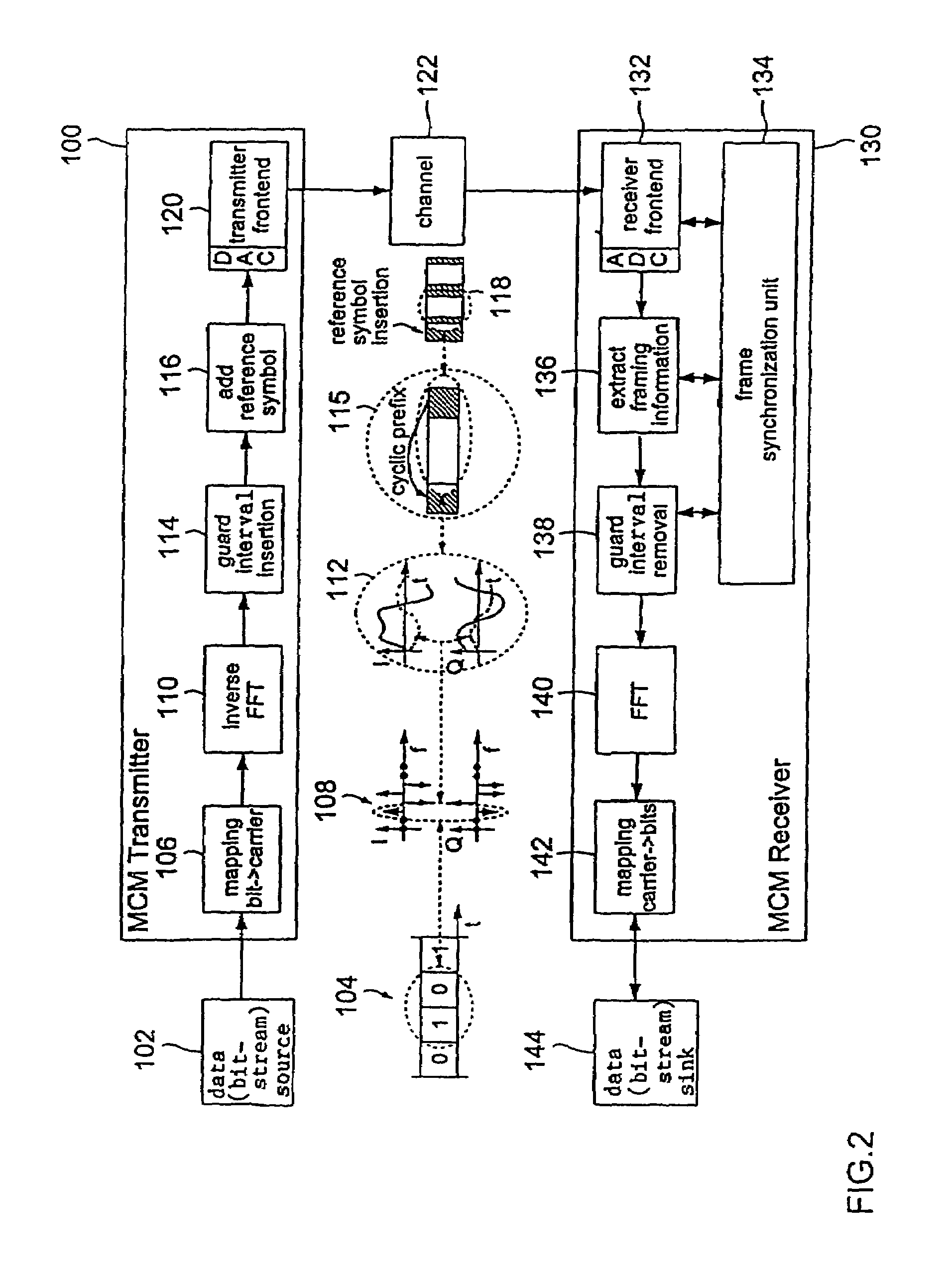Coarse frequency synchronisation in multicarrier systems
a multi-carrier system and coarse frequency synchronisation technology, applied in the field of coarse frequency synchronization in multi-carrier systems, can solve the problems of inapplicability to transmission over multi-path fading channels with large frequency offsets or mcm transmission systems, without major changes, and the methods for frame synchronization available up to date require either prior achieved frequency synchronization or become very complex
- Summary
- Abstract
- Description
- Claims
- Application Information
AI Technical Summary
Benefits of technology
Problems solved by technology
Method used
Image
Examples
Embodiment Construction
[0093]Although the present invention is explained mainly referring to a MCM system, it is obvious that the present invention can be used in connection with different signal transmissions that are based on different kinds of modulation.
[0094]FIG. 2 shows a MCM system overview on the basis of which the present invention will be described in detail. At 100 a MCM transmitter is shown that substantially corresponds to a prior art MCM transmitter except for the kind of the reference symbol being added to each frame of a MCM signal. A description of such a MCM transmitter can be found, for example, in William Y. Zou, Yiyan Wu, “COFDM: AN OVERVIEW”, IEEE Transactions on Broadcasting, vol. 41, No. 1, March 1995.
[0095]A data source 102 provides a serial bitstream 104 to the MCM transmitter. The incoming serial bitstream 104 is applied to a bit-carrier mapper 106 which produces a sequence of spectra 108 from the incoming serial bitstream 104. An inverse fast Fourier transform (FFT) 110 is perf...
PUM
 Login to View More
Login to View More Abstract
Description
Claims
Application Information
 Login to View More
Login to View More - R&D
- Intellectual Property
- Life Sciences
- Materials
- Tech Scout
- Unparalleled Data Quality
- Higher Quality Content
- 60% Fewer Hallucinations
Browse by: Latest US Patents, China's latest patents, Technical Efficacy Thesaurus, Application Domain, Technology Topic, Popular Technical Reports.
© 2025 PatSnap. All rights reserved.Legal|Privacy policy|Modern Slavery Act Transparency Statement|Sitemap|About US| Contact US: help@patsnap.com



